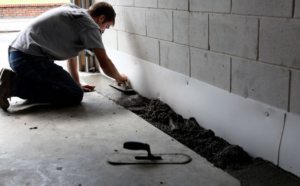Bakersfield Exterminator typical day includes performing an inspection and treating pest infestations. They also work with clients to help them prevent pests from returning. This may include sealing entry points and using traps or bait.
A career as an exterminator can be very rewarding and exciting. It can also be challenging and demanding.

An exterminator is a person who specializes in eliminating pests from homes and businesses. They usually use various methods to eradicate these pests, including spraying chemicals and trapping them. They may also advise property owners on how to keep pests from returning. This is a great job for those who are interested in working with insects and rodents.
Most exterminators work full-time and must adhere to strict safety protocols when handling hazardous materials. They also need to be able to follow instructions precisely when applying these chemicals. They often need to go through a series of tests and training to become certified as an exterminator. They also must be able to work in all kinds of weather and environments, including outdoor settings.
One of the most important parts of an exterminator’s job is the inspection of a property to determine the type and extent of the pest infestation. They must also be able to identify the source of the problem and assess any damage that has been caused by the pests. Once they have inspected the property, an exterminator will plan and implement a treatment. This may involve the use of chemical treatments or baits, as well as traps and barriers.
In addition to removing pests from residential and commercial properties, an exterminator may also work with agricultural and industrial customers. They must be able to understand the different pests that are present in these types of settings and how they affect production. In addition, they must be able to develop and apply integrated pest management strategies to prevent pests from damaging crops or equipment.
A typical day in the life of an exterminator begins with a discussion with the client. During this consultation, the client will describe the problem and ask the exterminator to recommend a course of action. The exterminator will then complete the treatment as prescribed by the client. After the treatment, the exterminator will discuss any additional precautions that need to be taken.
Although there are many benefits to working as an exterminator, the job does carry some risks. Some exterminators use harsh chemicals, which can cause health problems for their clients and neighbors. These chemicals can also be dangerous to children and pets. As a result, it is important to choose an exterminator who uses environmentally friendly methods.
Education requirements
A career in pest control can be a great way to make money and help protect public health, the food supply chain and people’s property. However, there are many education requirements to be a successful exterminator. These requirements vary by state, but generally include on-the-job training, training courses and passing a certification exam. In addition, aspiring pest control workers must have the physical stamina to work outdoors for long periods of time.
The best way to become an exterminator is to get a entry-level position with a pest control company and learn the skills on the job. This will give the new exterminator an idea of the day-to-day operations and customer interactions in the industry. Also, it will give the new exterminator a chance to get hands-on experience with different types of pests and their treatments.
In addition to on-the-job training, an aspiring exterminator must complete government-approved pesticide training programs to be competent with the chemicals used in the industry. These programs are designed to ensure that the exterminator understands the safety risks associated with the use of pesticides. Often, an aspiring exterminator can find these programs through their local community college or vocational school.
Once a pest control technician has completed the required training, they can apply for a state license. There are two main types of licenses available – commercial and private. The commercial license allows the exterminator to apply non-restricted pesticides in non-residential buildings. The private license only allows the exterminator to apply restricted chemicals to residential buildings.
In addition to the required training, an exterminator must be able to communicate well with customers and colleagues. This is important because it allows them to provide the best possible service to their clients. They must be able to explain the nature of the problem and describe their treatment plan in a clear and concise manner. They must also be able to answer any questions the client may have about the chemicals they are using. It is also important for them to keep accurate records of their inspections and treatments. This will allow them to track their progress and measure their effectiveness.
Work environment
The work environment for an exterminator, also known as a pest control technician, is often intense and stressful. They typically work in a confined space and must use chemical treatments to kill pests, such as cockroaches and bed bugs. In addition to treating infestations, they may have to inspect buildings and recommend measures to prevent future problems. They must follow all health and safety procedures when working with dangerous chemicals.
The most important skills for this position include attention to detail and the ability to learn quickly. They should be able to perform complex tasks, such as cutting or boring openings in building structures to access infested areas and insert nozzles to spray pesticides into walls, floors, or other places where pests live. They should also be able to prepare and handle pesticides, baits, traps, and related equipment.
People who work as exterminators are often empathetic and enjoy working with others. They also tend to be realistic individuals, which means they’re independent, stable, persistent, genuine, and practical. They like tasks that involve being tactile or physically athletic, and they are usually conservative in their thinking.
Job Outlook
Exterminators work on a full-time basis and are often required to travel to various sites to provide pest control services. They typically wear protective equipment like goggles, gloves and respirators depending on the nature of their work. They may also have to work at night and on weekends to meet client needs. Moreover, they must be able to work in all types of weather conditions. Despite these challenges, the job outlook for an exterminator remains favourable. According to CareerExplorer, the employment rate for this career is expected to show little change from 2014 to 2024. This is due to a low number of people interested in this field and the need to replace workers who retire or leave.
Aside from offering lucrative salaries, working as an exterminator is a rewarding and fulfilling career. They are the front line of defense against pest infestations and play a significant role in improving quality of life and safeguarding public health and safety. As a result, working as an exterminator is ranked highly in U.S. News and World Report’s Best Jobs list.
As a professional, it is important for an exterminator to have excellent customer service skills. This is because they must be able to explain the different pest control methods to their clients and answer any questions they might have. In addition, they must be able to log accurate records of their work and financial transactions. These skills will help them maintain a strong and reputable business. Moreover, working as an exterminator can be physically challenging and requires physical stamina to stand or crouch for long periods of time in difficult conditions.








